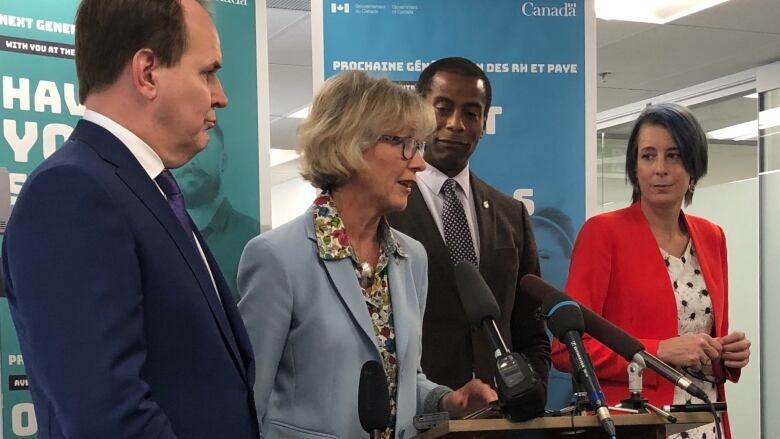3 companies competing to replace Phoenix named
Ceridian, SAP, Workday will vie to build new public service pay system

The federal government has named thethree companies that will competeto replace the failed Phoenix pay system.
Since its introduction in 2016, Phoenix has caused serious problems forthousands of public servants across Canada who have been improperly paid.
Last year, the government announced its plan toeventually scrapthe multi-million dollar pay system, but onlyonce a new and much improved technology is in place.
On Wednesday, the government announced Ceridian, SAP and Workday will compete to provide that replacement. All three companies were on a short list of five vendors released last year.
Ceridian is a Toronto-based pay systems specialist with offices across Canada, including Ottawa. German multinational SAP creates software to manage business operations that's already widely used in government.Workday, which delivers cloud applications, is headquartered in California but has offices in Canada and around the world.

A flexible process
The team at Treasury Board tasked with finding the replacement said naming three finalists will give the government the flexibility it needs in case there's a need to pivot to a different solutionalong the way.
We went to a raft of public servants to ask, 'What do you need?'- JacquieManchevsky, TBS
While only one of the companies will eventually be given the task of designing and implementing the new system, the other two firms might still be brought in to providecertain components, depending on the evolving needs of the hundreds offederal departments.
The next stage will be developing a pilot project and figuring out how the new pay program can run at the same time as Phoenix until the old system can be phased out.
In contrast to Phoenix, which was built on a one-size-fits-all software program that has to be constantlymodified, Treasury Board officials saidthe new system will be customizable, flexible and "evergreen,"meaning it will be able to change as technology and the needs of the government and its employees change.
Money runs out next year
Treasury Board Secretariat (TBS) was given $16 million over two years to figure out what kind of system to build and who should build it.That money runs out in March2020.
Treasury Board president Joyce Murray told reporters Wednesday that she understandsa new pay systemcan't come fast enough for public servants.
"We're absolutely committed to investing what is required to do this project properly. This can only be done with extensive user testing, full pilot projects, proper training and full examination of government's HR processes. We're committed to doing this work and doing it well."
The teamleading this project says it's been a transparent procurement processthat has involved public servants and their unions.
"We went to a raft of public servants to ask, 'What do you need?" said Jacquie Manchevsky, the corporate secretary for the project at TBS.
The team set up boothsin lobbies of federal buildings across the country, where they used iPads to test different ideas with public servants.
Union participation
Manchevsky says unions have been extremely supportive and have also participated in the evaluation and design process.
She said compared to traditional government procurement processes, this onehas moved ahead at "warp speed" and hasbeen embraced by the industry players they're working with.
Unlike during the development of Phoenix, the government's own IT staff have a role to play this time, according to Debi Daviau, president of the ProfessionalInstitute ofthe Public Service of Canada (PIPSC).
"We're now involved as a union and our members' expertise is being sought," Daviau said. "I can look at a member and say, 'There's a light at the end of the tunnel.'"












_(720p).jpg)


 OFFICIAL HD MUSIC VIDEO.jpg)
.jpg)



























































































